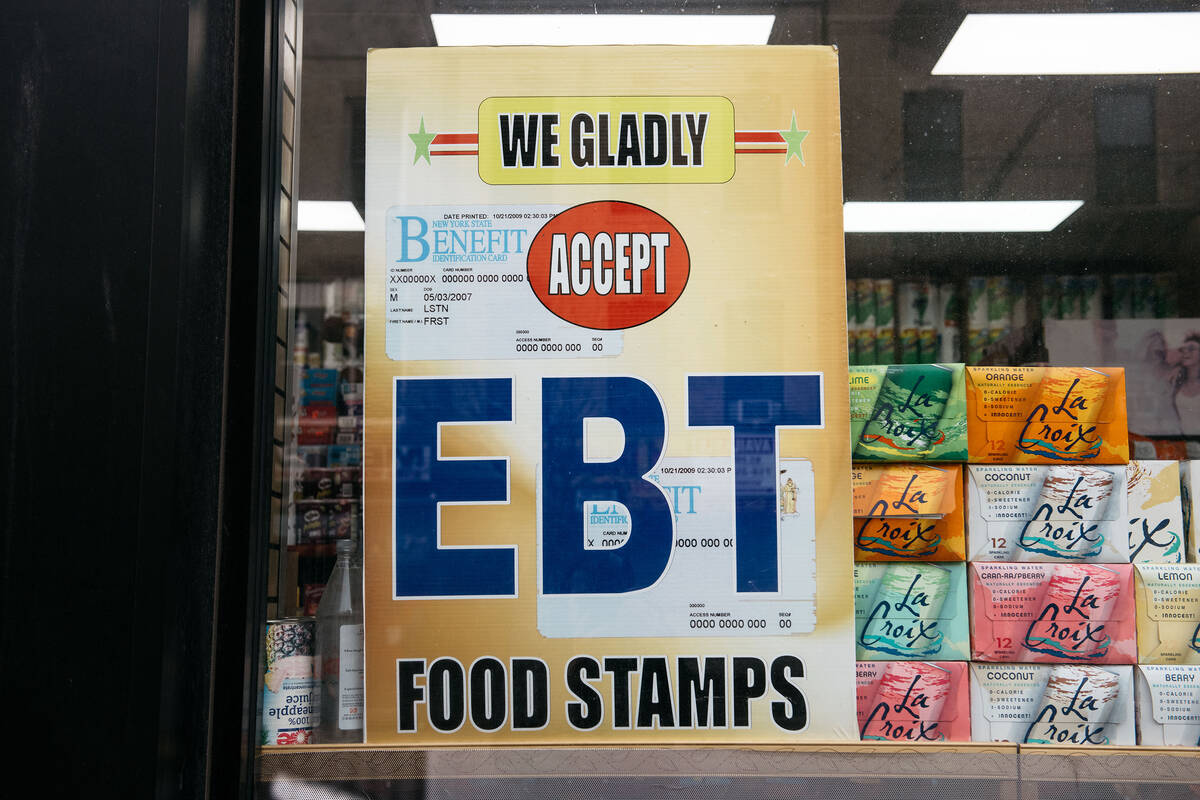VICTOR JOECKS: Shutdown exposes America’s food stamps folly
Low-income Americans have higher rates of obesity than rich Americans. That alone is reason to rethink food stamps.
More than 41 million people currently receive food stamps, now known as SNAP. In Nevada, the number is almost 500,000 people. That’s around 12 percent of the population and 15 percent of Nevadans.
On Saturday, recipients are supposed to receive their monthly handout. Absent some kind of deal in Washington, that won’t be happening because of the government shutdown.
“Senate Democrats have now voted 12 times to not fund the food stamp program,” the U.S. Department of Agriculture states on its website. It continues, “Bottom line, the well has run dry. At this time, there will be no benefits issued November 01.”
It then urges Senate Democrats to vote to “reopen the government so mothers, babies and the most vulnerable among us can receive critical nutrition assistance.”
The politics here are obvious. The Trump administration wants people who are angry about potentially not receiving food stamps to blame Democrats. But the policy needs another look.
When 12 percent of people are receiving food stamps, that’s not helping the “most vulnerable.” That’s the welfare state run amok.
Consider this. In 2003, there were around 21.2 million people on food stamps. That was around 7.3 percent of Americans. In 2003, the program cost under $24 billion. Last year, it cost more than $100 billion.
Even with a more modest food stamp program, Americans were not dying of starvation two decades ago. In fact, low-income Americans face the opposite problem. The less you earn, the more likely you are to be overweight. In 2023, the obesity rate for U.S. adults earning under $15,000 was 37.4 percent. For those earning $75,000 a year or more, it was under 30 percent.
The same trend is true for children. Almost 25 percent of kids living below the poverty line are obese. But for kids whose families earn at least 400 percent of the poverty line, the rate is around 10 percent.
Historically, this doesn’t make any sense. In the past, poor people faced hunger and the threat of starvation. Quite literally, only the rich could afford to be fat.
Food stamps are a major reason for this anomaly. A 2016 USDA report found the top item purchased with food stamps was soft drinks. Fourth-most popular was bagged snacks. Candy, ice cream and cookies were in the top 20.
Taxpayers subsidize junk food for the poor, contributing to higher obesity rates. That will lead to health problems that taxpayers will later pay for via Medicaid. This is sold as compassion, but it ends up as cruelty.
Certainly, there are some people who legitimately need food stamps on a temporary basis. But there are also many able-bodied adults who view food stamps as something they are owed simply for existing. They could be working but prefer making TikTok videos complaining about the supposed cruelty of their plight.
Paying people to be poor hasn’t solved poverty. It’s time for a different approach.
Victor Joecks’ column appears in the Opinion section each Sunday, Wednesday and Friday. Contact him at vjoecks@reviewjournal.com or 702-383-4698. Follow @victorjoecks on X.


















